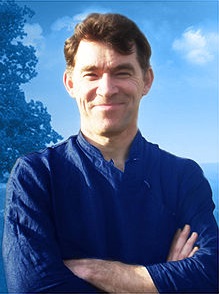Guest writer for Wake Up World
This is part one of a two-part series.
My mother passed away a few weeks ago, after a long illness. While sitting alone with her in the hospital shortly after her death, I had an unusual experience. I had expected to be upset, but felt strangely calm, even serene. As I sat there quietly, the room started to glow with white light, like moonlight. The light seemed to stream through, like water submerging the room, illuminating every object (including my mum’s body). The objects became more indistinct, losing their solidity as they merged into the light.
The room seemed strange and unfamiliar, as if it was the first time I had seen it. I felt strange and unfamiliar too, not the person I normally feel myself to be. As I observed the light, there was a feeling of stillness and spaciousness inside me. I felt as if a portal had somehow opened and I had entered a different reality. Then a nurse knocked at the door and entered the room, and I quickly switched back to a more normal state of consciousness.
I don’t have any explanation for this experience. I’m not religious, and it didn’t feel like a hallucination. I wasn’t on medication, lacking sleep, or in a state of intense emotion. Unlike most hallucinations, the experience carried a strong sense of reality, both at the time and now, when I recollect it.
Unusual Experiences of the Dying
Unusual experiences often occur around the time of death. In fact, there are so many varieties of unusual “end-of-life” experiences that it would be impossible to summarise them all in one short post. Helpfully though, they can be divided into two categories, which I’ll discuss in two separate posts.
In this post, I’ll discuss end-of-life experiences that happen to people who are in the process of dying. In the next, I’ll discuss experiences that happen to people who witness the deaths of others, or who are connected to the dying person (such as my experience above). I’ll describe the experiences sequentially, moving through the process of dying.
Terminal Lucidity
In the days or hours preceding death, it’s not uncommon for dying people who are cognitively impaired—perhaps due to dementia, a stroke, or meningitis—to suddenly become alert and aware. People who are immobile and unresponsive may become agile and alert. People who have dementia may regain their memory and other mental faculties, surprising their relatives by recognising them, remembering details, and speaking coherently. Terminal lucidity has been recognised and studied since the early 19th century, although as yet there is no explanation for it. (This also happened to my mother, although I don’t have space to describe the incident here.)
Encountering Deceased Relatives
Dying people often report seeing deceased relatives and friends, almost as if the latter are gathering to meet them as they die. When the near-death experience researcher Penny Sartori was working as an intensive care nurse, she learned that one of the common signs of imminent death was for patients to start speaking or gesturing to unseen people. As she wrote, this “was commonly accepted by many nurses that I worked with.”1
According to the research of the neuroscientist Peter Fenwick, around 90% of those who die consciously have this type of experience, which often includes perceptions of light and feelings of peace. In an example collected by Fenwick, a woman described an experience she had while caring for her dying father. “The gauze over his face moved. I ran to him. ‘Adriana my dear, your mother (who had died 3 years before) is helping me to break out of this disgusting body. There is so much light here, so much peace.’”2
Near-death Experiences
When people are resuscitated after life-threatening medical emergencies, they often report remarkable experiences. Despite showing no signs of physiological or neurological activity, they may describe leaving their bodies and witnessing their own medical procedures or other events. They often report journeying through darkness towards a bright light, with feelings of intense well-being. They sometimes report encountering deceased relatives or beings of light. In a 2001 study by the Dutch cardiologist Pim van Lommel, 64 out of 344 cardiac patients reported NDEs.3 More generally, the NDE researcher Bruce Greyson has suggested that between 10-20 percent of patients who are close to death have NDEs.4
Near-death experiences often have a profound transformational effect. People become more sensitive to beauty and to nature, less materialistic, more altruistic, and generally more positive.
Transformation Through Facing Death
Encounters with death can bring transformation even if a person doesn’t actually have an NDE (in the sense described above). In my book, Extraordinary Awakenings, I describe cases of profound personal transformation amongst cancer patients, the survivors of terrorist attacks, the survivors of suicide attempts, and others.5 The transformation is often so powerful that people report feeling as if they have a new identity, as if they are different people living in the same body.
Reality Is Stranger Than We Assume
Since death is such a profound and pivotal experience, it’s not surprising that it has such powerful effects, and engenders so many rich and strange experiences. But can these strange experiences be fully understood or explained? I’m not sure if they can, at least not in terms of our standard model of reality. There have been a vast array of attempts to explain near-death experiences in neurological or materialist terms, none of which appear (to me) to be plausible. In the same way, as noted above, there are no viable explanations of terminal lucidity.
In fact, one reason why the experiences are so significant is that they cast doubt on our standard materialist view of reality, which equates human consciousness with brain activity and assumes that consciousness will cease with the brain stops functioning. How can people with serious structural damage to the brain regain full consciousness? How can consciousness apparently continue in the absence of brain activity?
All of this suggests that reality is stranger than we think, and human experience includes many phenomena which are impossible to explain in terms of a materialist worldview.
We will explore more of these phenomena—the second category of unusual end-of-life experiences—in my next post.
References:
1. Sartori, P. (2014). The wisdom of near-death experiences. London: Watkins, p. 85
2. Fenwick, P. (2017). Perceptions of Beyond the Near Death Experience and at the End of Life. available at https://www.rcpsych.ac.uk/docs/default-source/members/sigs/spirituality-spsig/spsig-archive-fenwick-perceptions-of-beyond-in-the-near-death-experience-and-at-the-end-of-life.pdf?sfvrsn=7b6e14f3_2
3. Van Lommel, P. (2010). Consciousness beyond life: The science of the near-death experience. New York: HarperOne.
4. Greyson, B. (2021). After. New York: St. Martin’s Press.
5. Taylor, S. (2021). Extraordinary Awakenings. New World Library.
Originally published at Psychology Today and reproduced with permission.
About the author:
Steve Taylor is a senior lecturer in Psychology at Leeds Beckett University, UK. His latest books in the US are The Calm Center and Back to Sanity: Healing the Madness of the Human Mind. He is also the author of The Fall, Waking From Sleep, and Out Of The Darkness. His books have been published in 19 languages. His research has appeared in The Journal of Transpersonal Psychology, The Journal of Consciousness Studies, The Transpersonal Psychology Review, The International Journal of Transpersonal Studies, as well as the popular media in the UK, including on BBC World TV, The Guardian, and The Independent.
Connect with Steve at StevenMTaylor.com.

If you've ever found value in our articles, we'd greatly appreciate your support by purchasing Mindful Meditation Techniques for Kids - A Practical Guide for Adults to Empower Kids with the Gift of Inner Peace and Resilience for Life.
In the spirit of mindfulness, we encourage you to choose the paperback version. Delve into its pages away from screen glare and notifications, allowing yourself to fully immerse in the transformative practices within. The physical book enriches the learning process and serves as a tangible commitment to mindfulness, easily shared among family and friends.
Over the past few years, Wake Up World has faced significant online censorship, impacting our financial ability to stay online. Instead of soliciting donations, we're exploring win-win solutions with our readers to remain financially viable. Moving into book publishing, we hope to secure ongoing funds to continue our mission. With over 8,500 articles published in the past 13 years, we are committed to keeping our content free and accessible to everyone, without resorting to a paywall.








